Painting kitchen laminate countertops is an affordable and creative way to breathe new life into your kitchen without undergoing a full remodel. When I first decided to tackle this project, I was amazed at how transformative the results could be, even on a tight budget. Laminate countertops are known for their durability and versatility, but over time, they can lose their luster or start looking outdated.
Instead of replacing them, painting is an option that offers flexibility in design, allowing you to customize the look to suit your style. With the right tools, materials, and a little patience, it’s possible to achieve a finish that mimics more expensive materials like granite, marble, or quartz.
Preparation is the key to success in any painting project, and laminate countertops are no exception. Before diving into the actual painting, I make sure the surface is thoroughly cleaned. Grease, dirt, and grime can interfere with paint adhesion, so using a degreasing cleaner is essential.
Once the surface is clean, sanding is the next step. Sanding the laminate creates a rough texture that helps the paint adhere better. I prefer to use fine-grit sandpaper, as it provides enough abrasion without damaging the surface. After sanding, it’s important to wipe the surface clean with a damp cloth to remove dust particles.
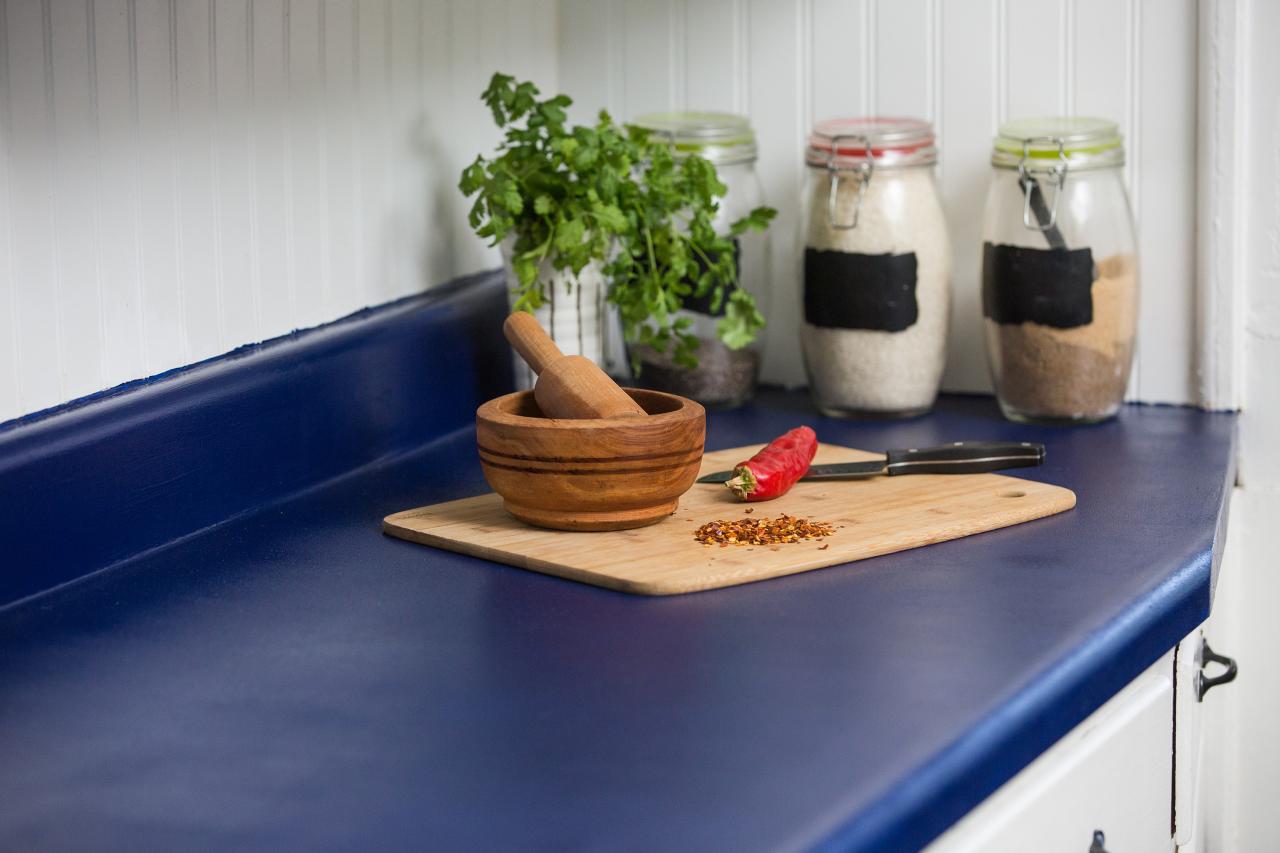
Choosing the right paint and primer is critical for a durable and long-lasting finish. In my experience, using a high-quality bonding primer ensures that the paint sticks well to the slick surface of the laminate. Oil-based primers and paints are often recommended because of their durability and resistance to moisture, but water-based acrylic paints are also a great option if you prefer a low-VOC and easier-to-clean solution.
There are also specialty countertop paint kits available that include all the materials you need for the project. These kits are particularly helpful for beginners or those looking for a foolproof approach.
Once the primer is applied and fully dry, it’s time to paint. Applying thin, even coats of paint with a foam roller or a high-quality brush yields the best results. I always recommend waiting the recommended drying time between coats to avoid streaks or unevenness. For added texture or a faux finish, sponging techniques or stencils can be used to create the appearance of natural stone or intricate patterns. I love experimenting with metallic paints or adding flecks of color to replicate the look of granite.

A topcoat or sealer is essential to protect the painted surface from scratches, stains, and moisture. When I first painted my countertops, I underestimated the importance of this step, and the paint began to chip within a few months. A clear polyurethane or epoxy resin topcoat provides a glossy, durable finish that can withstand daily wear and tear. For kitchens with heavy use, I recommend applying multiple layers of sealer and allowing each layer to cure completely before using the countertops.
One of the challenges I encountered during this process was ensuring a smooth, bubble-free finish. To avoid this issue, it’s important to work in a dust-free environment and apply the paint and topcoat in thin, even layers. Using a foam roller instead of a traditional paintbrush can help minimize brush marks and achieve a professional-looking result. Patience is crucial here, as rushing through the steps can lead to imperfections that are difficult to fix later.
Another important aspect to consider is color selection. When painting kitchen countertops, I like to choose colors that complement the existing cabinetry, backsplash, and flooring. Neutral tones like whites, grays, and beiges are versatile and timeless, while bold hues can create a striking focal point. If you’re unsure about the color, testing a small area or using removable paint samples can help you visualize the final look. I’ve found that incorporating subtle patterns or gradients adds depth and dimension to the surface.

The cost savings of painting laminate countertops compared to replacing them is one of the biggest advantages of this DIY project. Replacing countertops can be expensive, especially if you opt for high-end materials. In contrast, painting supplies are relatively inexpensive, and the results can be just as impressive.
In my experience, this project is ideal for homeowners who want to refresh their kitchen on a budget or experiment with a new design trend without committing to a permanent change.
Durability is a common concern when painting laminate countertops. While the finish won’t be as resilient as natural stone or quartz, proper preparation, application, and sealing can extend the lifespan of the painted surface. Avoiding abrasive cleaners, using cutting boards, and placing hot pans on trivets instead of directly on the countertop can help maintain its appearance. In my kitchen, adopting these habits has kept my painted countertops looking fresh for years.
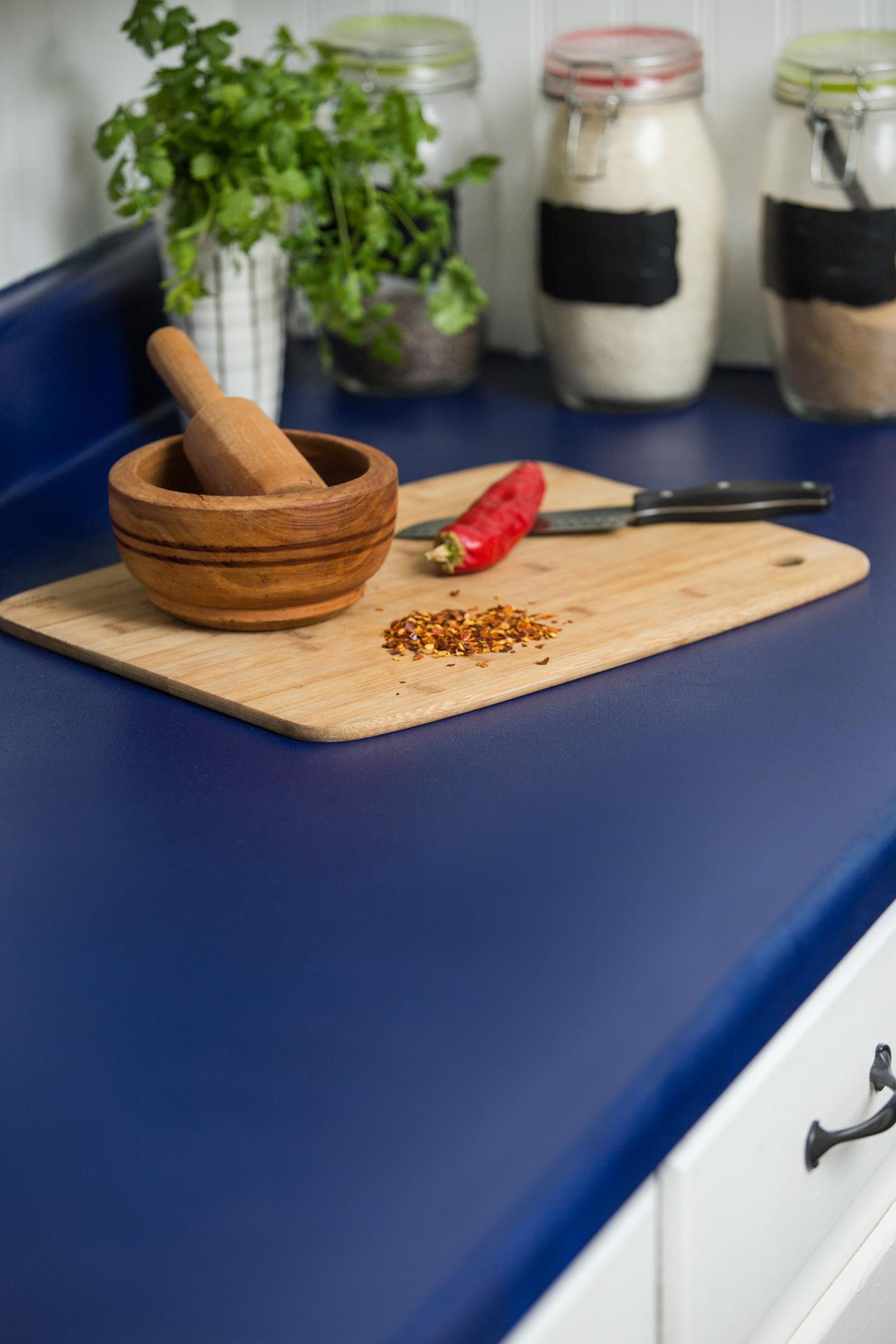
Safety is another factor to keep in mind during this project. Ensuring proper ventilation is crucial when working with primers, paints, and sealers, as the fumes can be harmful if inhaled. I always wear a mask and gloves to protect myself from chemicals and avoid skin irritation. If you have children or pets, keeping them away from the workspace is also important to prevent accidents.
One of the most rewarding aspects of painting laminate countertops is the opportunity for personalization. Unlike pre-manufactured countertops, painting allows you to tailor the design to your exact preferences. For instance, I’ve used painter’s tape to create geometric patterns or contrasting borders for a unique and custom look. The ability to update the design easily is another advantage. If I decide to change my kitchen’s color scheme, repainting the countertops is a relatively quick and straightforward process.
Despite its benefits, painting laminate countertops isn’t without its limitations. It’s not a permanent solution, and over time, the paint may show signs of wear, especially in high-traffic areas. However, I’ve found that touch-ups are relatively simple and can extend the life of the painted surface. For those who value creativity and flexibility, this trade-off is often worth it.
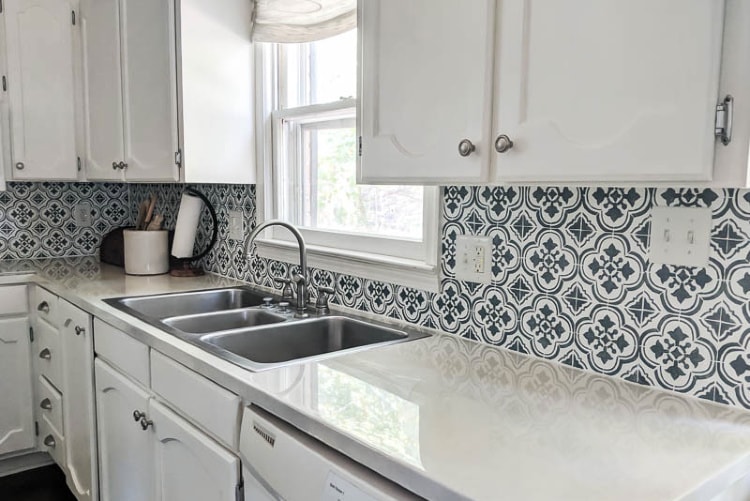
Common Mistakes to Avoid
Skipping Proper Surface Preparation: Neglecting to clean or sand the laminate thoroughly can result in poor paint adhesion, leading to peeling or chipping.
Using the Wrong Primer or Paint: Opting for regular wall paint instead of a primer and paint designed for laminate surfaces can compromise the durability of the finish.
Rushing Between Coats: Not allowing adequate drying time between primer, paint, and topcoat applications can lead to uneven surfaces or trapped bubbles.
Overlooking the Sealing Step: Without a protective topcoat, the painted surface will be more prone to scratches, stains, and moisture damage.
Choosing Incompatible Colors: Picking a color that clashes with the existing kitchen design can detract from the overall aesthetic.
Ignoring Safety Precautions: Failing to wear protective gear or ensure proper ventilation can expose you to harmful fumes and chemicals.
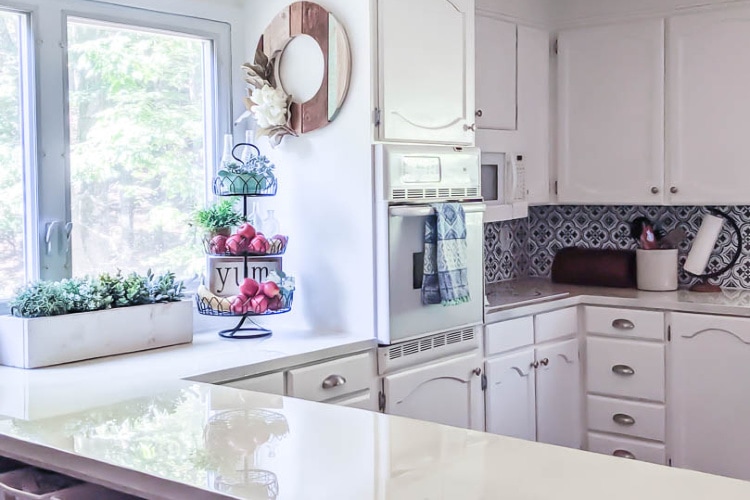
How long does it take to paint laminate countertops?
The entire process, including preparation, painting, and sealing, typically takes two to three days, depending on drying times. In my experience, allowing each layer to cure fully is crucial for a durable and professional finish.
What type of paint is best for laminate countertops?
Oil-based or acrylic paints work well for laminate countertops. Specialty countertop paint kits are also an excellent option, as they are formulated specifically for this purpose. I’ve had great success with bonding primers paired with high-quality acrylic paints for a low-VOC alternative.
Can I create a faux finish on laminate countertops?
Yes, faux finishes like marble or granite can be achieved using sponging or stippling techniques. I recommend practicing on a sample board before attempting the design on your countertops to perfect the look.
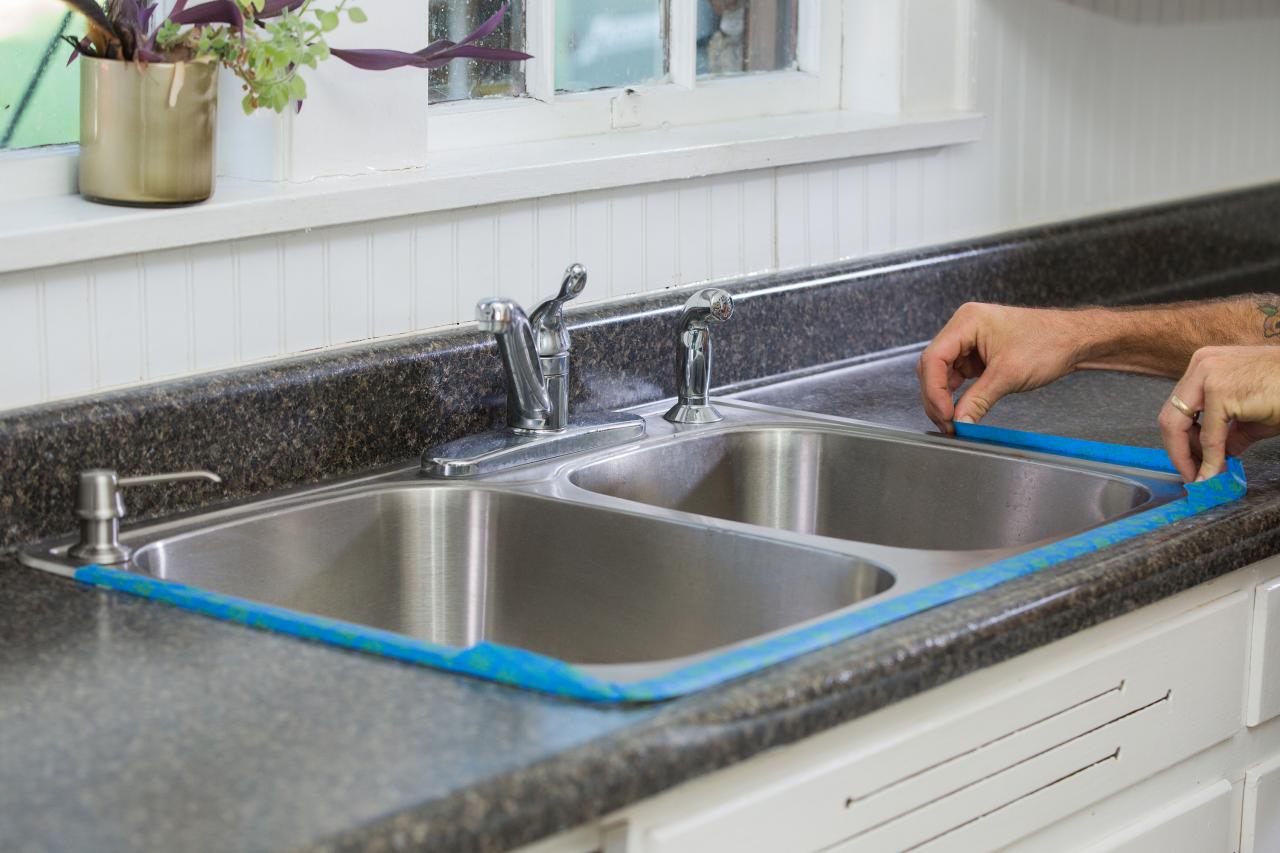
How durable is a painted laminate countertop?
While not as durable as stone or quartz, painted countertops can last several years with proper care. Using cutting boards, trivets, and gentle cleaners has helped me maintain the finish in my kitchen.
Can I change the color later if I repaint it?
Absolutely! One of the biggest advantages of painting countertops is the ability to update the color or design easily. I’ve found that repainting is a straightforward process, as long as the surface is cleaned and prepped properly.
Is painting laminate countertops a permanent solution?
No, painting is a cost-effective temporary solution to refresh the look of your kitchen. Over time, the paint may show signs of wear, but touch-ups or reapplications can keep the surface looking great for years.
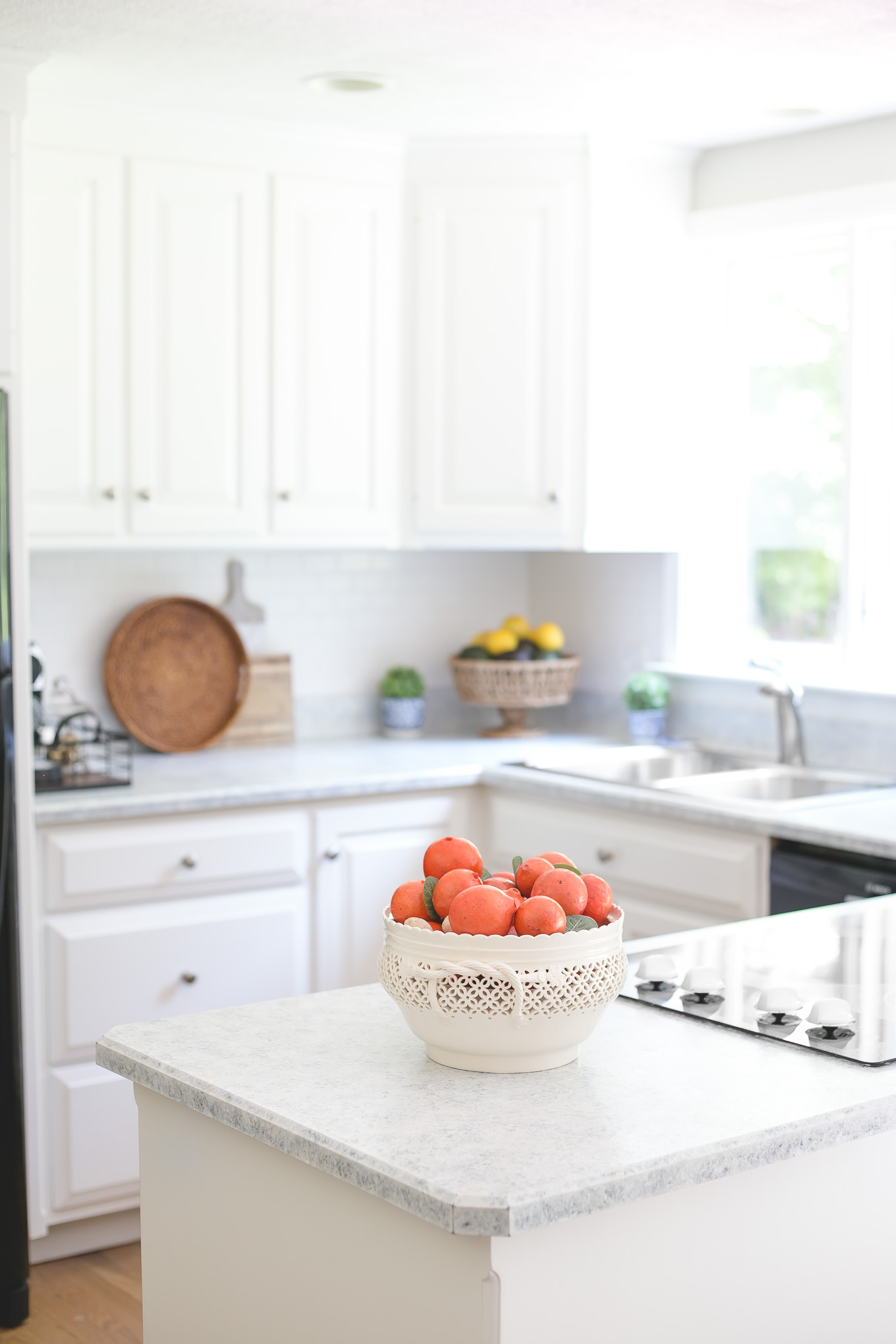
Fake the Look of Granite: Painting Laminate Counters with a Paint

Related articles:
- Painting Kitchen Laminate Countertops
- Quartz Laminate Countertops
- Laminate Countertops Installation
- Laminate Countertop For Kitchen Island
- Kitchen Island Laminate Countertops
- Cheap Laminate Countertops
- Laminate Countertops That Look Like Stone
- Plastic Laminate Countertops
- Laminate Countertop Ideas For Kitchen
- Dark Green Laminate Countertops